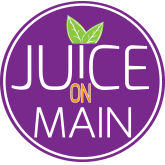Seasonal Fall Foods To Add Into Your Life
BY APRIL PASCARELLI
So, fall is here but, since August, all we have been hearing about is pumpkin. Whether you’re a fan or not, there are many other delicious and nutritious fall favorites to get your fill of while they are seasonally in stock. And, there are plenty of reasons to stick with a seasonal selection. Eating food that is in season will typically get you the most bang for your buck. When shopping during peak supply, food will taste its freshest and is generally less expensive. In addition, it is the purest way to eat and provide love for our planet! (Extra kudos if your local farms are organic!) Locally grown, seasonal food requires fewer resources to transport and store your food (ultimately leading to less greenhouse gas threatening our air).
So, if you are sick of pumpkin everything but still want to embrace the season, then stick around to read about some other fresh fall food faves.
Beets
Beets, or beetroot, go by many different names. Sometimes referred to as golden, red, dinner, garden, or table beets, this root veggie made its way from the Middle East many years ago. Early on, beets were grown and cultivated primarily for their greens. And it was not until much later that the root portion of this plant became food.
Raw beets are mostly water and some carbohydrates, with a small percentage making up protein and fat. Raw beetroot is a plentiful source of folate, also known as vitamin B9. Folate is necessary within the body and essential for pregnant women to help reduce the risk of neural tube defects in babies. Being low in folate can often also lead to anemia.
Beets are pretty popular and found in many foods and drinks as a vibrant coloring agent helping to enhance the natural color of food. Additionally, they can be pulverized into a raw juice or peeled and added to salads. Often, they are sliced and pickled and added to burgers and sandwiches. But they also can be roasted, boiled, or steamed, and eaten warm or cold. Beets can be found everywhere, from meatballs in Sweden to a mashed side in Germany to a staple ingredient in a traditional Ukraine Borscht. So versatile, so good!
Brussels Sprouts
Part of the cabbage family, these mini cabbage lookalikes often get a bad reputation. But these little guys gained their popularity in Brussels, Belgium, where they earned their name. Word has it that they were growing Brussels sprouts as far back as the 13th century, but it was not in written material until the 1500s. Eventually, production of this plant made its way to the states in the 1800s when French settlers had traveled with them to Louisiana. And in the early 1920s, they started popping up along the California Coast.
These babies consist of mostly water and moderate amounts of B vitamins and other essential minerals. They are loaded with vitamins C and K, offering more than 100% of the average daily value. And they are incredibly high in sulforaphane. Sulforaphane is a phytochemical with antioxidant and anti-inflammatory properties that have shown up in cancer prevention and heart health studies. Brussels sprouts are best when boiled, steamed, grilled, roasted, stir-fried, or
popped into the slow cooker. And the ultimate way to enhance their natural flavor is by topping them with olive oil, balsamic vinegar, brown sugar, or spices.
Cabbage
A relative of the Brussels sprout, cabbage is another cruciferous vegetable that became domesticated long ago in Europe (approximately 1000 BC) before it became mainstream in the 16th century.
Cabbage is more than 90% water and a great source of vitamins C and K, with moderate amounts of vitamin B6 and folate. There have been ongoing studies linking the possibility of consuming cruciferous veggies such as cabbage to lowering one's risk of colon cancer.
Cabbage is best steamed, stewed, sautéed, braised, pickled and fermented, or eaten raw. Great for salads and coleslaws, stews, and other popular dishes such as kimchi and sauerkraut.
Squash
An absolute must-have in the kitchen this fall, squash comes in many different forms. From butternut to summer and winter styles to the more hybrid version known as spaghetti squash, this plant comes packed with nutrients and delivers on taste while having a slew of options for cooking.
Squash is rich in vitamin C and contains some amounts of B6 and riboflavin protection. Spaghetti squash is high in folic acid (an absolute must for moms-to-be), filled with potassium (goodbye cramps and muscle spasms), and loaded with vitamin A and beta carotene (hello, eyesight)!
To Wrap Things Up
When it comes to fall veggie must-haves, the list could go on and on. Along with pumpkin, apples are another traditional trademark of autumn in the air. But also, depending on where you live and availability in your area, note a few more all-stars to add to your lineup: pears, swiss chard, turnips, parsnips, and rutabaga. Experiment with hearty soups and beefed-up broths (minus the actual beef), and consider roasting, sautéing, and even grilling if the weather allows.
Eating seasonally is the best way to diversify your diet. It is the most nutritious and the most flavorful way of eating. Not only will you benefit from the immense amount of phytonutrients - natural compounds that offer up the array of colors and flavors to your plant-based foods - but you will also be supporting your local farmers! The moral at the end of this story: stick to seasonal produce that is present. And ultimately, reach for things that make you feel good, fill you up, and fuel you!

